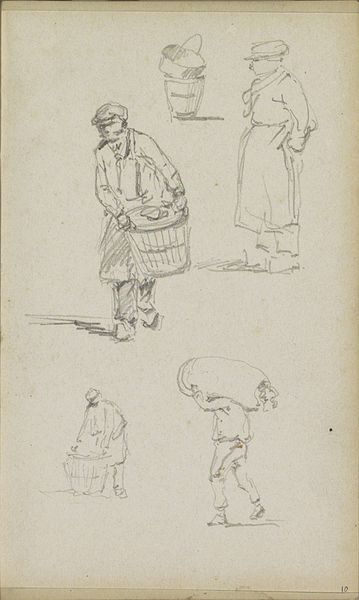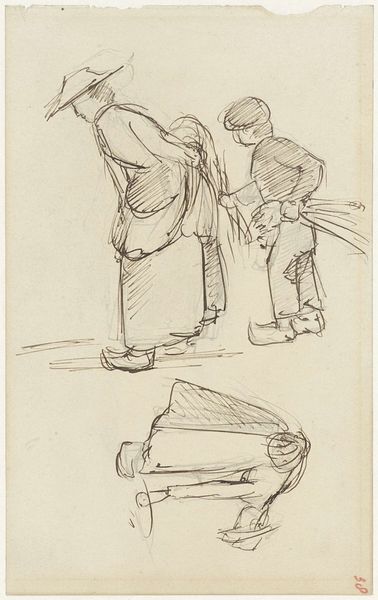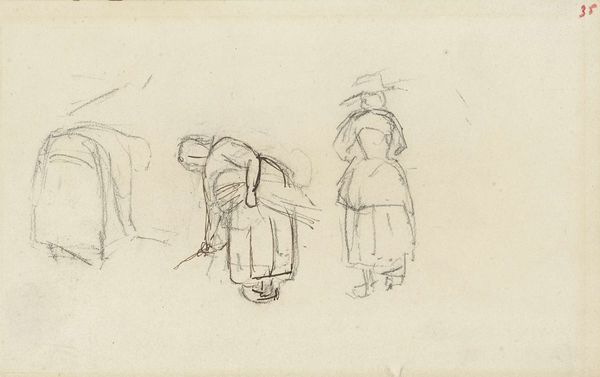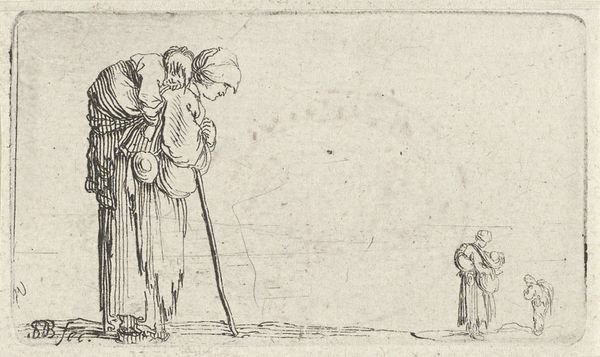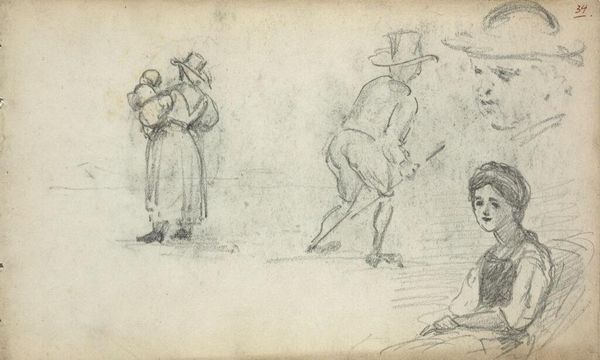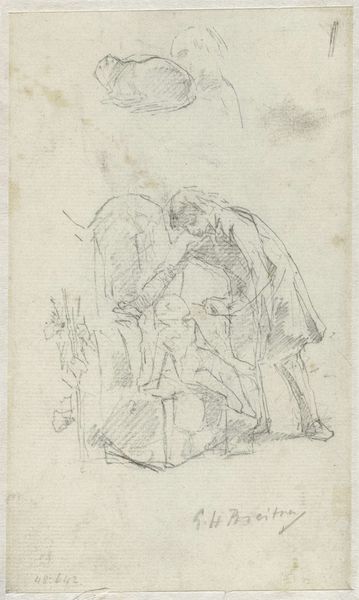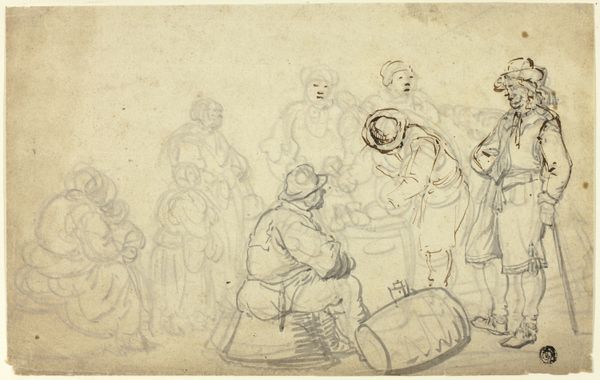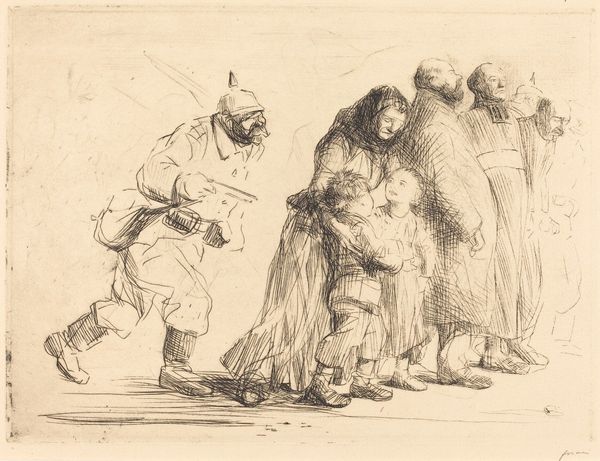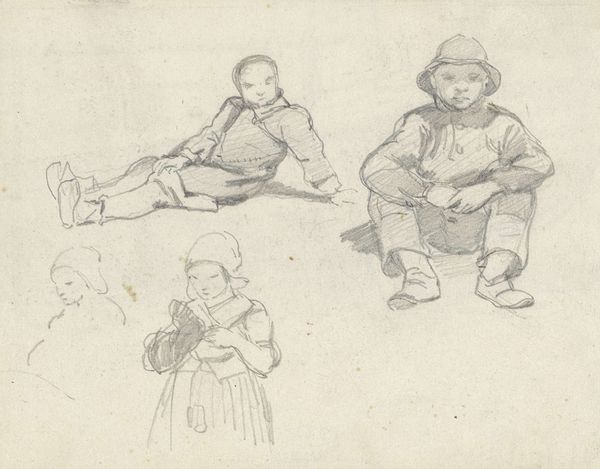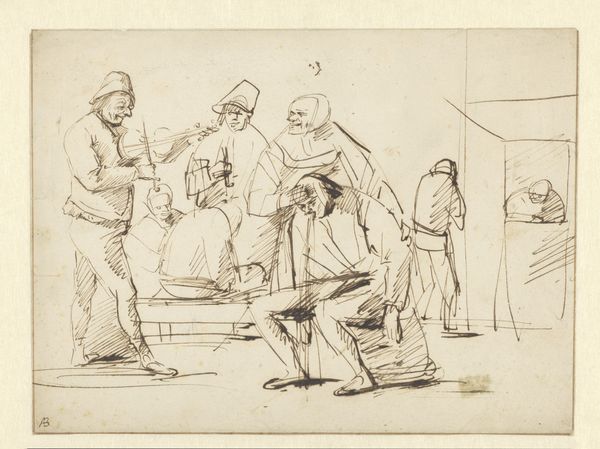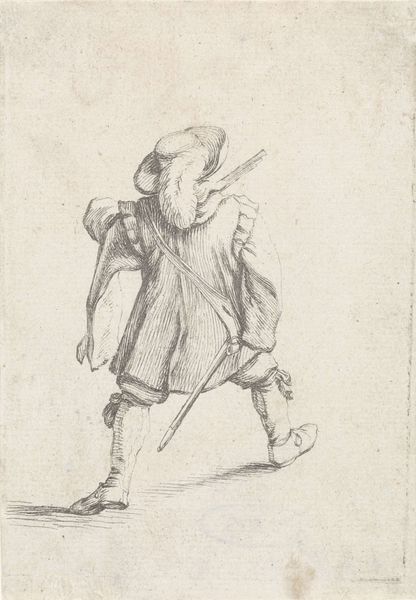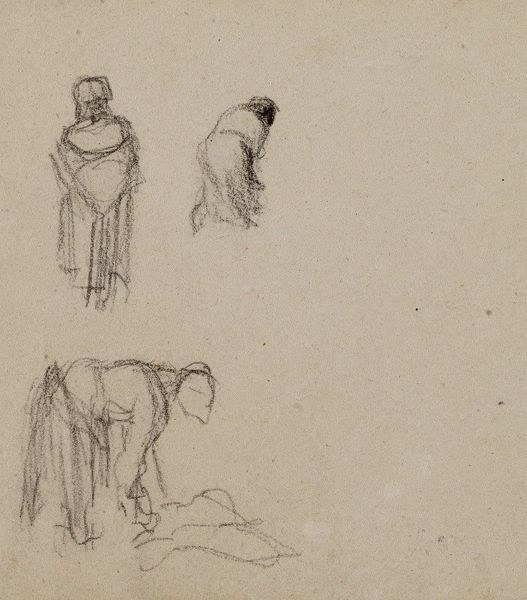
drawing, paper, ink
#
portrait
#
drawing
#
dutch-golden-age
#
paper
#
ink
#
ink drawing experimentation
#
pen-ink sketch
#
sketchbook drawing
#
genre-painting
Copyright: Public Domain: Artvee
Curator: Look at this pen-and-ink sketch by Nicolaes Maes, dating from around 1645 to 1650, called "Studies of Two Men and a Woman Teaching a Child to Walk." It’s on paper, and typical of the genre painting he often explored. Editor: You know, my first thought is 'intimacy'. It’s loose, gestural, almost like a stolen moment from daily life. It feels like catching someone’s daydream on paper. The lines, quick and confident, remind me of smoke – fleeting but leaving a mark. Curator: Absolutely. Maes was incredibly skilled at conveying domestic life. These aren’t idealized figures; their clothing suggests their class, perhaps the working class. This aligns with the demand of Dutch society at the time to celebrate genre and scenes familiar to regular, urban lives. Editor: The materiality itself supports this—the quick nature of ink, of paper being cheap and available, gives me the sense that these sketches were preparation. I see raw documentation. A behind the scenes peek at artmaking, but its looseness allows me to appreciate these figures. Curator: Precisely. Maes employed very specific types of ink during that era—usually iron gall ink. It's made from tannins from oak apples mixed with iron salts—widely accessible. This emphasizes that access was part of the point. Editor: Makes me consider how ordinary actions become extraordinary. The effort to capture movement and form with just ink? Beautifully rendered. Like when a photograph suddenly makes you reconsider someone’s humanity. Curator: Well said. Consider the lines denoting fabrics, how the material is made visually heavy and rich via repetitive hatchings of ink. This contrasts, for instance, with other figures’ more economic rendering and communicates something about labor, social class, etc. Editor: Yes, look at the economy of line in the faces versus the clothing’s depth, as if time is more precious for portraying emotions, and labor is felt in rendering materials. In his ink Maes reminds me what art is about—extracting profound meaning from ordinary things. Curator: Thinking about materials alongside his output allows me to more clearly interpret this ink sketch of ordinary citizens—his focus makes me really appreciate labor—the literal physical labor—depicted. Editor: I'm struck with the way the drawing offers itself, vulnerable and unfinished, creating a deep bond.
Comments
No comments
Be the first to comment and join the conversation on the ultimate creative platform.
